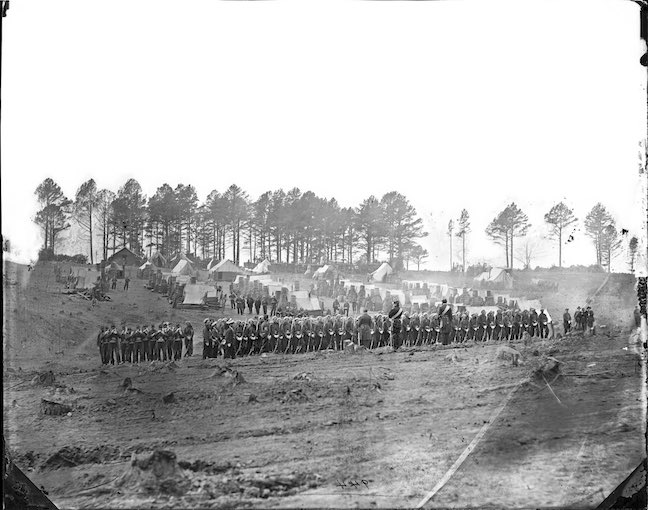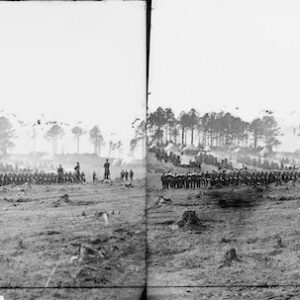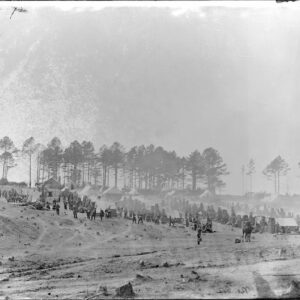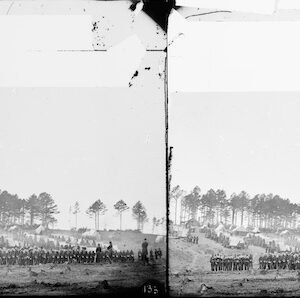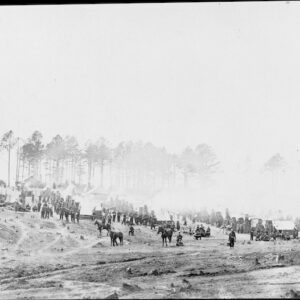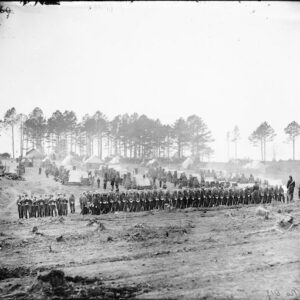| Credit: | by OSullivan (Timothy H.) |
|---|---|
| Date: | 1864.04.07 |
| Negative Size: | 8 in. x 10 in. |
| Equipment: | barrel; bayonet; cap box; horn; long gun; scabbard; sword; wall tent; wedge tent |
| Locations & Lines: | Brandy Station VA; Virginia |
| Military Units: | 114th Pennsylvania Infantry; 114th Pennsylvania Infantry (Band); 3rd Corps; 3rd Corps (1st Division); Army of the Potomac; US Army |
| Persons: | Crawford (John S.); Eddy (Henry M.); Given (Alexander W.); Richardson (Almyne H. G.); Watson (Charles H.) |
| Sources: | Library of Congress; National Archives |
$6.99
File Details: AILKm, 750 DPI, TIFF, Copy Negative, 41.7 Mb
Image ID: AILK
Gardners Photographic Sketch Book Of The War. Vol. 2, No. 55. Guard Mount, Head-Quarters, Army of the Potomac. February, 1864. Soon after the breaking out of the war, a company of Zouaves, formed upon the French model, was organized in Philadelphia, with Capt. Collis as commander. They became body guard to General Banks, and did good service. Subsequently, Capt. Collis obtained authority to increase his small command to a Regiment, altering the costume from the old red Zouave bagsnot at all suited for service in the woods of Virginiato trousers of the same color. The affection of the soldiers for color is extraordinary; no statistics, showing the large increase of casualties to showy uniforms, could induce the Zouaves to part with theirs, and in this dress the 114thattached to the Third Corpsparticipated in some of the bloodiest battles. At Gettysburg, their gallant Lieutenant Colonel (Carada) was taken prisoner, with a number of the Regiment, fighting bravely against odds.
When the army lay in winter quarters around Culpeper, they relieved the 93rd New York, in duties of Headquarters Guard to General Meade, near Brandy Station. The photograph represents morning guard mount in front of the picturesque camp, a good specimen of the soldiers architecture; the huts, with the barrel chimneys on the slope of the hill, are the quarters of the men; the larger ones on the ridge belong to the officers, while on the extreme right the tent in which the Sutler keeps store, is pitched. The entire space was a portion of a dense wood, almost impassable when first chosen for headquarters, and filled with rabbits, quail, hawks, owls and other game. Soon all was cut down save the little grove on the top of the hill, reserved by Capt. Sleeper, of the 10th Massachusetts Battery, who had pitched his tents there, on what was once the rebel General Stuarts headquarters.
The duties of the guard of headquarters, which also formed part of the provost brigade under Gen. Patrick, included, besides furnishing the regular camp guards for the protection of the officers quarters, the care of the valuable wagon train of army headquarters, both in park and on the march, and the custody of rebel prisoners and deserters, detained for a time at the Provost Marshals. In summer time, when the tents were shaded and embowered in branches of the green pine, a highly dramatic picture would be presented by the Regiment, marching out from the trees for evening dress parade, their muskets glittering brightly in the setting sun, white turbans and blue and scarlet uniforms contrasting strongly against the dusky background, while the officers of camp grouped around, smoking their pipes in the pleasant coolness of the evening air, listened to the Faust March, by the Zouave band.
Etched onto negative: 944.
